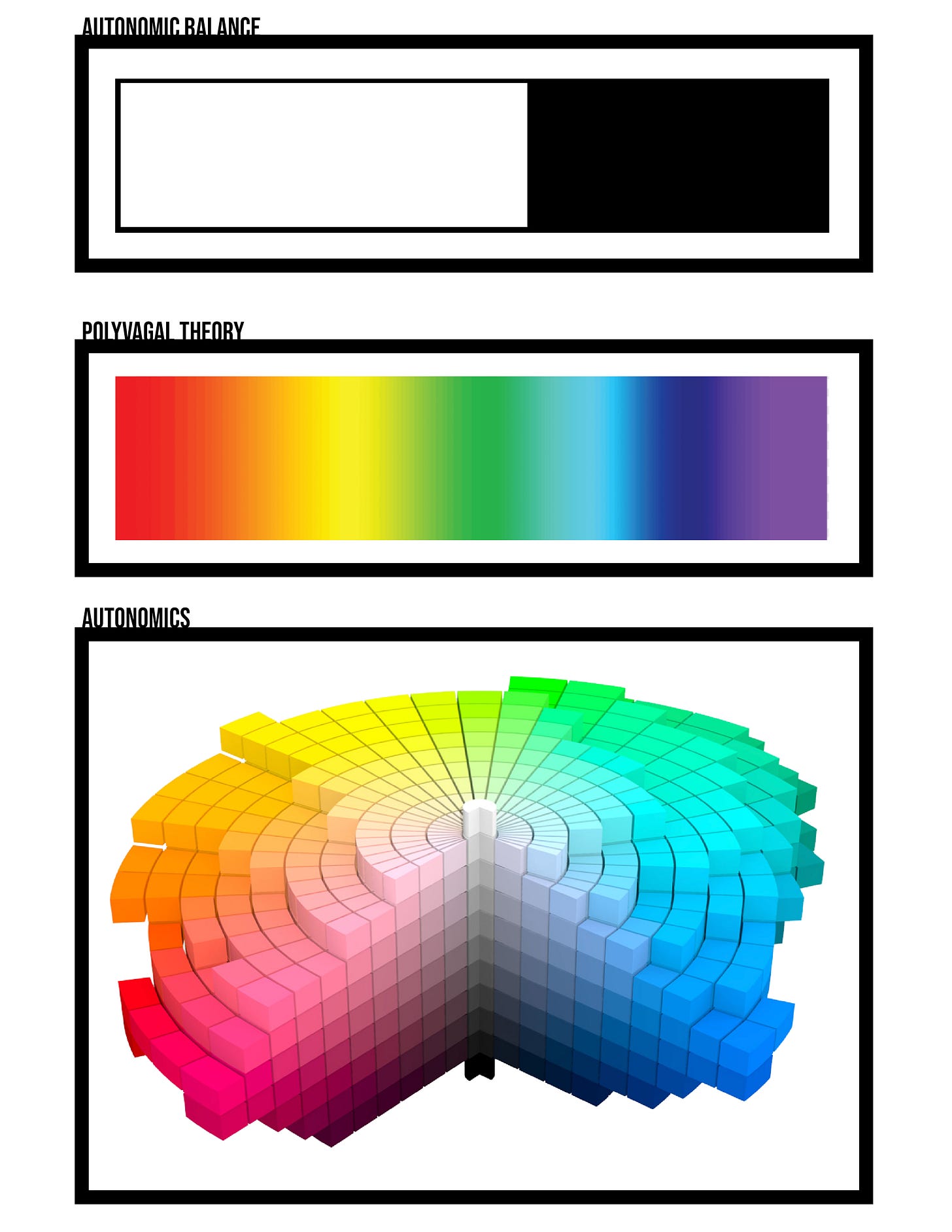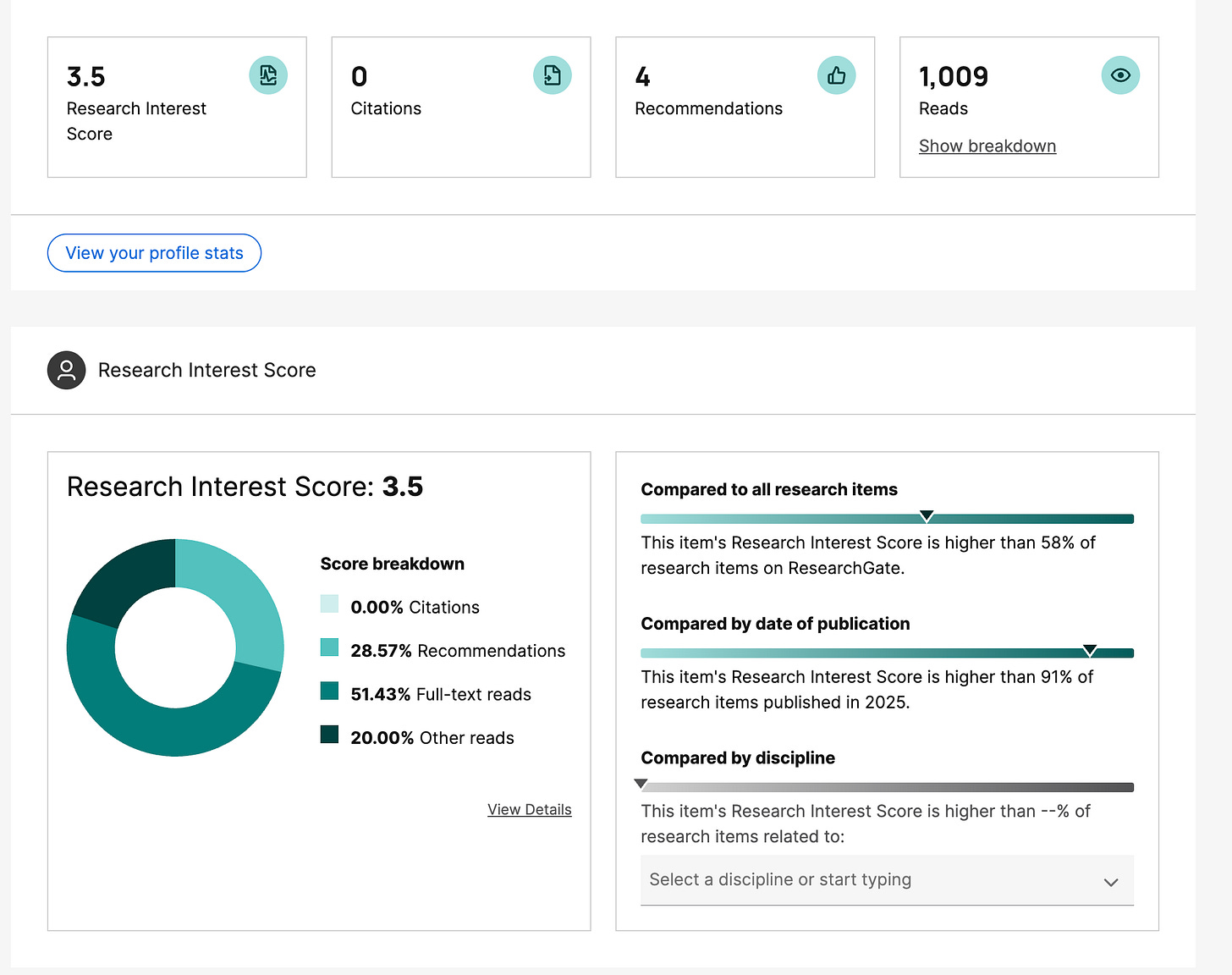Our Third White Paper
Autonomics building towards a credible evidence base in the literature
We now have three white papers and a poster on ResearchGate. Help us out and learn more about WHITE PAPER ONE) the fundamental frameworks of the new foundation model, WHITE PAPER TWO) our understanding of the relationship between non-resolving autonomic states and the origin of disease, and WHITE PAPER THREE) the future of in vivo autonomic measurement by having a read.
How does this help us out? I have been in dialogue recently with a Professor at Harvard Medical School who runs a lab that has been serially spinning off disruptive companies for more than a decade. His mentor, Robert Langer, has 1,500 pending and issued patents and is the most cited engineer in history. He received 220 major awards, and 44 honorary doctorates.1 He is a founder of Moderna. Moderna? Ever heard of them? mRNA vaccines? Covid-19? Anybody?
In our initial conversation, with the same alacrity as if he was comparing several different brands of breakfast cereals, he walked me through the pathway they have used to create 16 companies. It has nine steps and goes like this:
Identify area they are seeking to create a breakthrough in. Read all extant literature and everything they can find written about the area.
Focalize a major transformational unsolved problem that, if solved, creates transformational value. {These steps are all important, but formulating the problem is crucial.}{As is this notion of transformational value. One of my favorite companies, which emerged from a materials science lab at Stanford University run by (at-the-time Assistant) Professor Yi Cui, began when Cui figured out how to create a novel kind of silicon nanowire to store charge in a battery. Silicon can store 10X the charge of graphite (which is what current battery anodes are made from), but the process of absorbing and releasing charge pulverizes the molecular structure and degrades the cell. The nanowires provided a micro-lattice structure that stopped this from happening. 17 years later, Amprius has commercialized this tech and is on the verge of transforming the battery industry.}
Solve that problem and develop a breakthrough innovation (in a way, this is the hard part as it relates to invention.) But the hard part of invention is not the same as commercialization at all. Side note: Hearth Science has already done this many many times. Side note number two: the skillset that makes someone a breakthrough inventor is highly unlikely to overlap with the skillset that makes someone a great operator. This is why charismatic inventor founders often leave as a company matures. Making a breakthrough (even a fundamental one) and scaling a company– different skillsets.
Publish a paper in a reputable peer-review journal detailing the invention.
Use the paper to create the foundation for getting a patent.
Use the patent to create an intellectual property moat to raise money from investors (they have raised 650M to date - M is a million dollars. That is over half a billion dollars.)
Use the funding to find and build the optimal operating team.
Find the world’s most qualified advisors to sit on the advisory board.
Commercialize the invention
I found myself having sort of a funny reaction to the matter-of-factness of this conversation. I’m really not a great fan of end-stage capitalism, as many of you likely know.
I also raised half a million dollars in 2021 from about 35 investors to fund a clinical autonomic treatment software platform that is extremely innovative and useful, but that we were not able to achieve product-market fit on (yet). My wife and I personally invested nearly all of our life savings in this, and I worked on it 80 hours a week for 5 years. I have never spent more time, energy, and money on anything with so little to show for it.
Now, I’m not exactly saying I regret this (it’s a bit complicated…) but in speaking with a potential investor over the summer found myself reflecting with him about the possibility that maybe there is not a fundamental issue with the software (if you have created fourteen versions of a breakthrough product and still cannot sell it successfully you naturally think there is something wrong with the product), but the sequence of things the company was doing. It was the first time that it occurred to me that there might not be an issue with the product, but rather with the sequence in which the company was doing things.
So to hear Jeff Karp lay out the sequence for going from breakthrough invention to commercialization made me realize that we had missed some steps. And this is where the research comes in.
The white papers that we have published are preliminary to peer-review papers. They begin to establish our credibility in the research literature. And so the more people read them, the more people hear about them, and the more we move towards the next step of this 9 step process, which would be step number 4, namely publishing in a reputable peer-review journal.
This weekend, our paper on the new foundation model crossed the threshold of 1,000 reads. This positions it with a research interest score higher than 91% of all research items published on Research Gate in 2025. Since there are 25 million researchers publishing on the platform, this is non-trivial.
Please share this post with anyone you believe would find our work relevant, and please…
This is exactly 220 major awards and 44 honorary doctorates more than myself.





